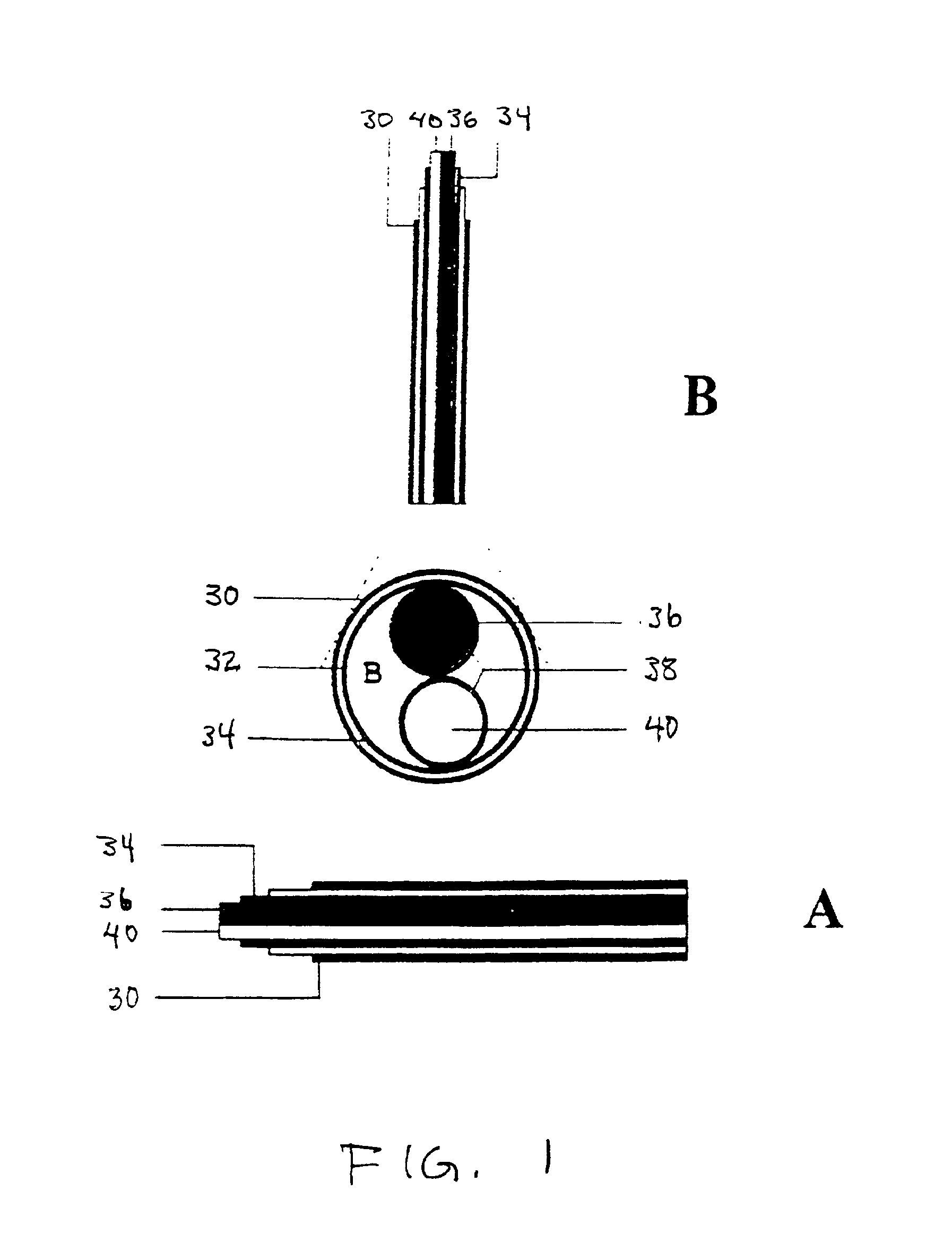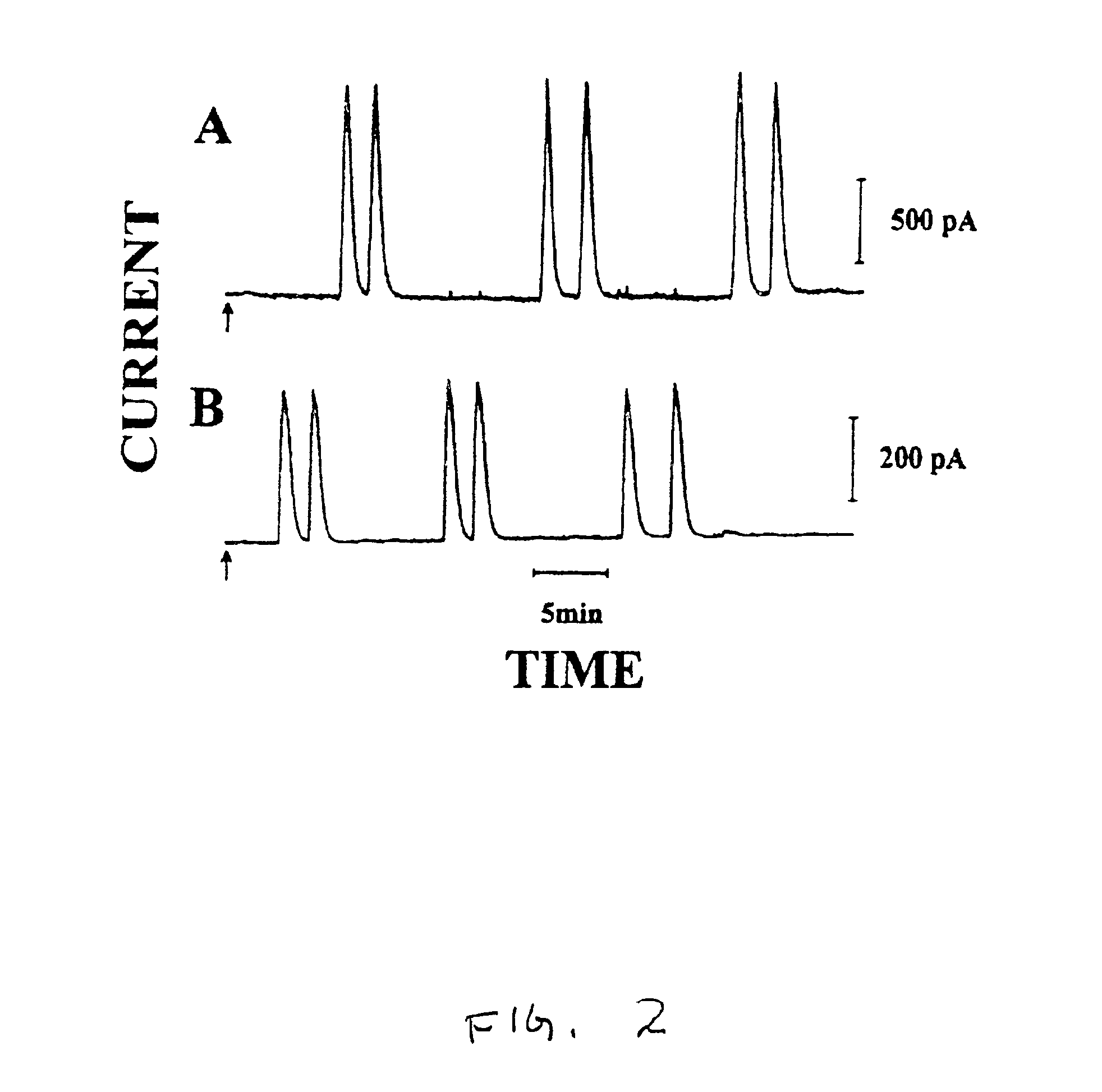Microsensors for glucose and insulin monitoring
a glucose and insulin monitoring and microsensor technology, applied in the field of microsensors for glucose and insulin monitoring, can solve the problem of not providing simultaneous detection of glucose and insulin, and achieve the effect of reducing interference and increasing accuracy and selectivity
- Summary
- Abstract
- Description
- Claims
- Application Information
AI Technical Summary
Benefits of technology
Problems solved by technology
Method used
Image
Examples
example 1
[0060]Cyclic voltammetry was conducted using a modular electrochemical system, with flow injection amperometric data collected using voltammetric analyzers with recorders. A standard flow injection system was utilized. Currents were measured in two electrode systems, with stainless steel and Ag / AgCl serving as reference electrodes for glucose and insulin measurements, respectively. Voltages are against the relevant reference electrode.
[0061]FIG. 2 depicts dual channel flow injection current and time profiles at the needle detector of FIG. 1 for alternating injections of 5 mM glucose (A) and 400 nM insulin (B). The applied potential for both sensors was +0.6 V against stainless steel, for the glucose sensor, and against Ag / AgCl, for the insulin sensor. The carrier solution was 0.1 M NaCl and 0.05 M phosphate buffer at pH 7.4, with a flow rate of 0.5 mL per minute. Both glucose sensor 36 and insulin sensor 40 responded rapidly to injections of the target analytes, with nearly instanta...
example 2
[0062]The concentration of RuOx and plating time in the electrochemical deposition were determined. Insulin response increased rapidly with the RuOx plating time up to a plating time of about ten minutes, and leveled off at a plating time of about above twenty minutes. The effect of detection potential was also determined. Insulin anodic response started at +0.3 V, rose sharply to about +0.55 V, and leveled off at higher values. Reported data was obtained utilizing a 25 minute RuOx plating time and a detection potential of +0.6 V.
example 3
[0063]FIG. 3 shows the simultaneous response to glucose (A) and insulin (B) in mixtures containing varying concentrations of glucose and a fixed concentration of insulin. Operating conditions were as described for Example 1. The glucose signal increased linearly with the concentration over a 3 to 7 mM range, without influencing response for the 200 nM insulin. Additionally, both glucose and insulin signals, for a series of twelve repetitive injections, were highly consistent, demonstrating reproducibility. The mean peak current for glucose peaks (A) was 860 pA and a relative standard deviation of 2.6%, and for insulin peaks (B) was 243 pA, with a relative standard deviation of 4.1%.
PUM
| Property | Measurement | Unit |
|---|---|---|
| Diameter | aaaaa | aaaaa |
| Diameter | aaaaa | aaaaa |
| Diameter | aaaaa | aaaaa |
Abstract
Description
Claims
Application Information
 Login to View More
Login to View More - R&D
- Intellectual Property
- Life Sciences
- Materials
- Tech Scout
- Unparalleled Data Quality
- Higher Quality Content
- 60% Fewer Hallucinations
Browse by: Latest US Patents, China's latest patents, Technical Efficacy Thesaurus, Application Domain, Technology Topic, Popular Technical Reports.
© 2025 PatSnap. All rights reserved.Legal|Privacy policy|Modern Slavery Act Transparency Statement|Sitemap|About US| Contact US: help@patsnap.com



